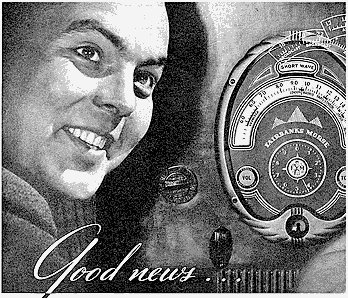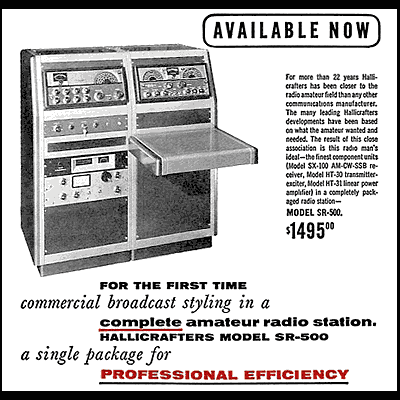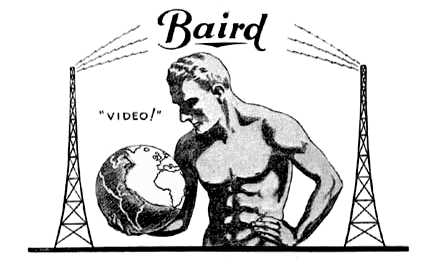
Mr. Valve Hurling Fire Into the Aether!

Mr. Valve Hurling Fire Into the Aether!
 I've been a ham forever. I thought I'd lost interest in radio, but it turned out that I'd only lost interest in post-modern radio. It's all boring chitchat on overdesigned, mass-produced toys that are obsolete every 9 months. It's fun to keep inventing new modes, but a bit of the cutting edge is losing out to cellular phones, which nowadays can do just about anything except slice bread. Radio romance must inevitably shift from the mere doing of radio to doing it as art. It's already starting, as witness the sudden rush to own any kind of tube radios at all. (Mine are not for sale.) This is getting good...
I've been a ham forever. I thought I'd lost interest in radio, but it turned out that I'd only lost interest in post-modern radio. It's all boring chitchat on overdesigned, mass-produced toys that are obsolete every 9 months. It's fun to keep inventing new modes, but a bit of the cutting edge is losing out to cellular phones, which nowadays can do just about anything except slice bread. Radio romance must inevitably shift from the mere doing of radio to doing it as art. It's already starting, as witness the sudden rush to own any kind of tube radios at all. (Mine are not for sale.) This is getting good...
Boat
|
The huge mailing list dedicated to restoration of vintage comm gear |
![[Boatanchor Logo]](images/hbelogo.gif) |
|
|
The term, Boat Anchors, started as derogatory ham slang for old tube
radios that were being junked, sold for scrap, or (in one eponymous case) actually used to anchor a boat. It is now more of a term of endearment, for neat old radios that you need another guy and a truck to haul home.
The Boat Anchor mailing list was started by a couple of hams who liked to tinker old radios. I don't think they had any idea how big it was going to get. It's read all over, and it is definitely an authoritative source for answers to just about any tube communications radio question you'd ever have. It's probably what kept me in ham radio. |
|||
Here's my gorgeously illustrated, forever unfinished, guide to boat anchor manufacturers.

![[Grimeton transmitter]](images/alex.gif)
The Alexanderson alternator is one awesome device. It's a 200 kW, AC generator spun up to high rpm, creating a continuous RF wave on 17.2 kHz. That's kHz. The 18,000 meter band.
Ernst F.W. Alexanderson was a radio pioneer who worked for General Electric after 1902. His alternators were the first continuous-wave radios. These were seen as a good alternative to telegraph cables, and a global network was built, using some pretty awesome antennas. Some of these stations lasted well into WW II. Sweden's "Great Radio," SAQ, is still fired up for special occasions.
Along with telegraphy, there was voice. Yup, they modulated these beasts. There were a couple schemes, both involving shunting the 200 kW away from the antenna, both VERY scary. But they were used for the famous Wilson speeches in WW I. GE started its radio engineering department to build these. In 1919, Marconi Wireless offered to buy the patents. Instead, GE spun off the radio department as RCA, Radio Corporation of America.
The rest is history.
![[ Really large, strange, old, ham radio ]](images/calif-kw.jpg)
A 'California Kilowatt' was old hamspeak for a transmitter with a power input, uh, somewhat in excess of the legal kW. Aka a 'Texas Final,' though nowadays more typically a 'Death Ray.' Kluge (no, not 'Kludge,' though for all I know it was one) Electronics, in Los Angeles, took advantage of the name when they marketed this weird thing in the 1940s. The xmtr is in the desk, which also has a mount for a standard size boatanchor receiver. The RME is shown, but others could be bolted in. It all collapsed and folded under the top, which included the map at no extra cost. It was apparently a heroic attempt to fashion a boat anchor that the 'XYL' (ham's wife) would allow in her house. But, fear not, it still only ran the legal kW.
Actually, this idea wasn't that off the wall. Later on, E.F. Johnson marketed its Viking Kilowatt, a huge amplifier available mounted inside a large, flat, battleship-grey desk. It had plenty of room for your exciter, your receiver, and you.
This picture was in Electric Radio. It was sent by Lyndon (VE7TCP), who got it from Ross (VE6PDQ), who in turn got it from Richard (VE6BSV). Mister Valve heartily thanks all of you!
![[Picture Of Machine]](images/instruct1.gif)
Holy thorium, Batman, another good-weird valve page, this time in Europe! Wumpus (named for a German computer game) has some nice pictures and valve lore, plus a funny attitude. Just too cool.
Mr. Valve's Radio Picks |
Finding the golden signal in the sea of blue ook |
![[Boatanchor Logo]](images/hbelogo.gif) |
|

go back
to previous frequency
turn off
the rig and get some sleep